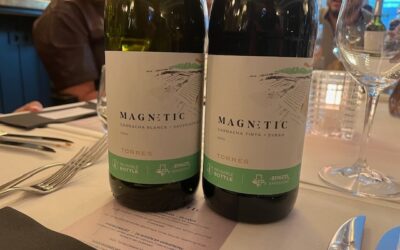
Wine harvest 2024, key facts about Austrian wine
© Landwirtschaftskammer Österreich / Landwirtschaftskammer Österreich
Weather conditions lead to an early harvest; very healthy and ripe grapes expected
At a press conference in Vienna, the President of the Austrian Winegrowers’ Association Johannes Schmuckenschlager reported on the very early start to this year’s wine harvest, expecting a lower harvest volume than last year: “At 2.0 million hl, the volume of wine will be considerably lower than the average over the last few years.” In 2023, the volume of wine produced totalled 2.33 million hl, while the annual average for the period 2019 to 2023 was 2.41 million hl. Schmuckenschlager explained that the reason for the early harvest was the very early budding of the vines, along with sufficient precipitation in the spring and hot spells in the summer. The main harvest is now in full swing in all wine-growing regions, and we can look forward to a mature, harmonious vintage.
Very changeable weather throughout 2024
The weather conditions during 2024 are the reason for this exceptionally early harvest. In contrast to last year, there was sufficient precipitation during the winter, although from January on, the winter months were too warm for the time of year. A warm start to spring and temperatures close to those usually associated with summer at the start of April resulted in very early budding, three weeks earlier than the long-term average. “Early budding always entails a risk of damage due to late frosts, which can occur right up until around the middle of May. And indeed, in the second half of April, there were multiple late frosts throughout the whole of Austria,” Schmuckenschlager reported. While in most parts of Austria, only a few low-lying or young vineyards suffered localised frost damage, parts of the Thermenregion, the Kamptal and the Wachau region were more seriously affected.
As a result of the early budding, the blossom also came out correspondingly early. In many places, this already started in the last week of May, coming to an end in the first two weeks of June. However, the rain that fell during the blossoming period meant that blossoming was delayed in some regions and also resulted in coulure damage in some cases. Keeping the vines healthy required extra special attention during this important and sensitive growing stage. The first hot spell with temperatures over 30 °C started in mid-June. This resulted in extremely rapid growth of both vegetation and berries, right through to grape closure. Due to the continued hot weather in July and August, ripening commenced very early and advanced rapidly. This was also helped by the good supply of water left over from spring, although levels of precipitation during the summer varied considerably.
In some regions, there was no rain to speak of at all throughout the summer. Other regions, on the other hand, were well-supplied with water, as in the area around Krems, for example. Unfortunately, this year also saw some storms with heavy hail. Areas that were particularly affected include Neusiedl am See, Gols and Podersdorf (all around Lake Neusiedl), Güssing in southern Burgenland and a few wine-growing regions in Steiermark (Styria) such as Leibnitz, Deutschlandsberg and the Hartberg area. Just recently, there were massive storms in the Hollabrunn area (Weinviertel) and severe hail storms on Vienna’s Nussberg. In this context, it must be said that the increase in the incidence of storms is also a consequence of climate change.
The early budding and blossoming, the good levels of precipitation and the hot spells that followed during the summer are the reason why the wine harvest has begun so unusually early. In Burgenland, the main harvest started at the end of August, in Niederösterreich (Lower Austria), Steiermark (Styria) and Wien (Vienna) in the first week of September.
Lower harvest volumes
However, Schmuckenschlager explained, “In terms of volume, we are expecting to harvest less than last year, and also compared to the average from previous years. In many vineyards, the clusters were less well formed this year, and late frosts and coulure during blossoming have also reduced the volume.” Due to the hot spells in the summer, the diameter of the grapes, and consequently the must yield, is also lower than in normal years in many places. Although the hail storms were bitter for the regions affected, the impact on Austria’s total wine harvest generally remains negligible. “According to information received from the regions, a wine harvest of around 2.0 million hl is expected this year. This leaves us around 15% lower than last year, which in itself was not a big harvest,” said Schmuckenschlager. However, thanks to the reserves held by the wineries, there is no need to fear a wine shortage.
Particularly dense, ripe red wines expected
“Once again, the winemakers have done their best to ensure healthy grapes. The advanced ripening as a result of the weather conditions means that such an early harvest is necessary in order to achieve a harmonious sugar-to-acid ratio,” explained Schmuckenschlager, happy with the quality of the grapes. “We can look forward to a mature, harmonious vintage that may well be a bit more dense in some cases,” he added. This year’s vintage will particularly favour the red-wine grapes. As a result of the small berry size and the very dark, concentrated grapes, we can expect dense, fully ripe red wines.
A responsible attitude to drinking rather than a blanket judgement
Nowadays, reports often create the impression that drinking any alcohol at all is dangerous and should be avoided. However, this sweeping generalisation ignores the fact that not all alcoholic drinks are the same and not all consumption is abusive. What is important is to take a responsible attitude to alcohol. As Schmuckenschlager stresses, “As an industry, we are decidedly opposed to alcohol abuse, but we also refute such blanket judgements. Alcohol should always be drunk in moderation and responsibly.”










